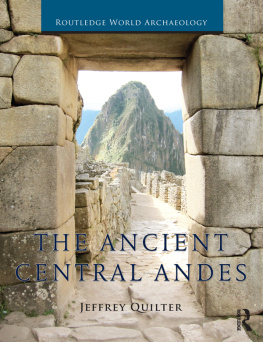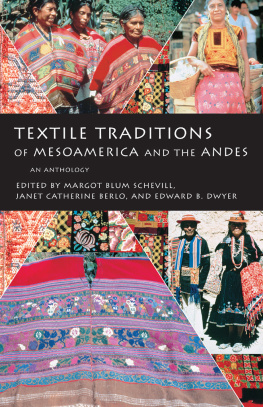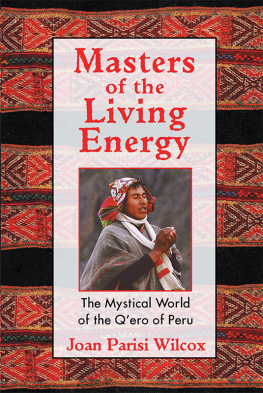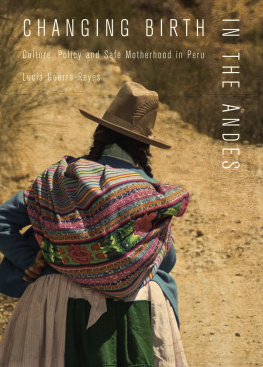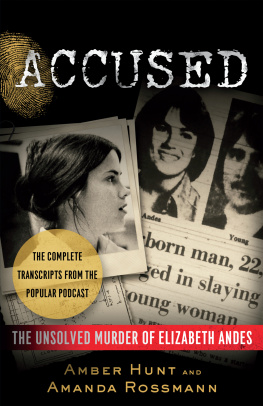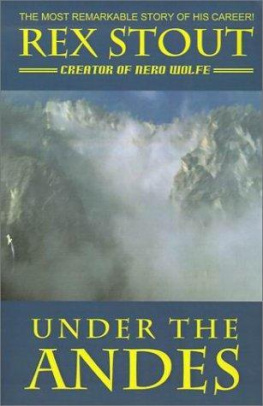THE ANCIENT CENTRAL ANDES
Quilters text is a succinct and up to date account of the cultural history of the Central Andes. Period by period he cuts to the heart of the important developments, and provides students with a sense of the magnificence of ancient Andean civilization. His explanations and interpretations of past events are clear, yet nuanced and balanced.
Katharina Schreiber, University of California, USA
The Ancient Central Andes presents a general overview of the prehistoric peoples and cultures of the Central Andes, the region now encompassing most of Peru and significant parts of Ecuador, Bolivia, northern Chile, and northwestern Argentina. The book contextualizes past and modern scholarship and provides a balanced view of current research. Two opening chapters present the intellectual, political, and practical background and history of research in the Central Andes and the spatial, temporal, and formal dimensions of the study of its past. Chapters then proceed in chronological order from remote antiquity to the Spanish Conquest.
A number of important themes run through the book, including: the tension between those scholars who wish to study Peruvian antiquity on a comparative basis and those who take historicist approaches; the concept of Lo Andino, commonly used by many specialists that assumes long-term, unchanging patterns of culture some of which are claimed to persist to the present; and culture change related to severe environmental events. Consensus opinions on interpretations are highlighted as are disputes among scholars regarding interpretations of the past.
The Ancient Central Andes provides an up-to-date, objective survey of the archaeology of the Central Andes that is much needed. Students and interested readers will benefit greatly from this introduction to a key period in South Americas past.
Jeffrey Quilter is the William and Muriel Seabury Howells Director of the Peabody Museum of Archaeology and Ethnology at Harvard University, USA. He previously served as Director of the Pre-Columbian Studies Program and Curator of the Pre-Columbian Collection at Dumbarton Oaks, Washington DC and as a professor of Anthropology at Ripon College, Wisconsin. He has been involved in archaeological research particularly in Peru and Costa Rica. He has published numerous articles and books including Life and Death at Paloma (1989), Cobble Circles and Standing Stones (2004), Treasures of the Andes (2005), and The Moche of Ancient Peru (2011).
Routledge World Archaeology
Ancient Turkey , Antonio Sagona and Paul Zimansky
Prehistoric Britain , 2nd edition, Timothy C. Darvill
Forthcoming:
Ancient Iran , Roger Matthews and Hassan Fazeli
Ancient Crete , Jan Driessen
Formative Britain AD 4001100, Martin Carver
Ancient Southeast Asia , John Miksic and Goh Geok Yian
Prehistoric Italy , Robin Skeates
THE ANCIENT CENTRAL ANDES
Jeffrey Quilter

First published 2014
by Routledge
2 Park Square, Milton Park, Abingdon, Oxon OX14 4RN
and by Routledge
711 Third Avenue, New York, NY 10017
Routledge is an imprint of the Taylor & Francis Group, an in forma business
2014 Jeffrey Quilter
The right of Jeffrey Quilter to be identified as author of this work has been asserted by him in accordance with sections 77 and 78 of the Copyright, Designs and Patents Act 1988.
All rights reserved. No part of this book may be reprinted or reproduced or utilized in any form or by any electronic, mechanical, or other means, now known or hereafter invented, including photocopying and recording, or in any information storage or retrieval system, without permission in writing from the publishers.
Trademark notice : Product or corporate names may be trademarks or registered trademarks, and are used only for identification and explanation without intent to infringe.
British Library Cataloguing in Publication Data
A catalogue record for this book is available from the British Library
Library of Congress Cataloging in Publication Data
Quilter, Jeffrey, 1949
The ancient central Andes / Jeffrey Quilter.
pages cm. (Routledge world archaeology)
Includes bibliographical references and index.
Indians of South AmericaAndes RegionAntiquities. Indians of South AmericaAndes RegionHistory. Indians of South AmericaAndes RegionSocial life and customs. Andes RegionCivilization. Andes RegionAntiquities. I. Title.
F2229.Q55 2014
980.01dc23
2013025670
ISBN: 978-0-415-67309-9 (hbk)
ISBN: 978-0-415-67310-5 (pbk)
ISBN: 978-1-315-85794-7 (ebk)
This book is an essay, an attempt to synthesize current knowledge of the prehistory of the Central Andes, the region once encompassed by the Inca Empire that includes parts of present day Colombia, Ecuador, Peru, Bolivia, Argentina, and Chile. I hope that the reader will find it informative and interesting in its presentation of the worlds of the ancient peoples of the Central Andes and some of the ideas that scholars have developed concerning them. I have certainly found writing this book informative, interesting, and exciting to research and write, even though I have spent almost half a century involved in the topics it covers. I learned much in investigating some issues with which I was relatively unfamiliar, and although my love for the subject has never flagged, I was reminded of why I became interested in the Andes in the first place.
Indeed, it is astounding to me how much new information is available, compared to when I first studied Andean prehistory a half-century ago, on everything from the major topics, such as the features of significant time periods and cultures, to small details about everyday life at various times and places. The pace of work and publication also has increased dramatically in recent years. Field, laboratory, and other investigations have been aided by more and better quality publications than ever before, and by new generations of scholars including world-class researchers in Europe, North America, Asia, and Latin America.
I have tried to present information as objectively as possible while being fully aware that complete objectivity is impossible to achieve in a work like this. I have included some topics and left others out, and in making those choices my own predilections and biases have influenced the contents of this book. As much as possible, however, I have tried to concentrate on major topics and issues with an occasional mention of a small detail that often speaks volumes. I have included topics that I believe most readers will want to know about, and tried to present differing views clearly without editorializing.
After two chapters in which I present background information, I proceed chronologically through prehistory from early to late times. The reader may note that I occasionally repeat statements. This is partly to emphasize key issues and themes and also because some readers may choose to read chapters separately. In the Afterword I also offer a summary thumbnail review of prehistory and my own perspective on some key issues and changing perspectives.
Next page
